THE GEORGE PEREZ INTERVIEWS: The master artist also reveals how Bill Mantlo, George Tuska and Steve Englehart were instrumental in his rise…
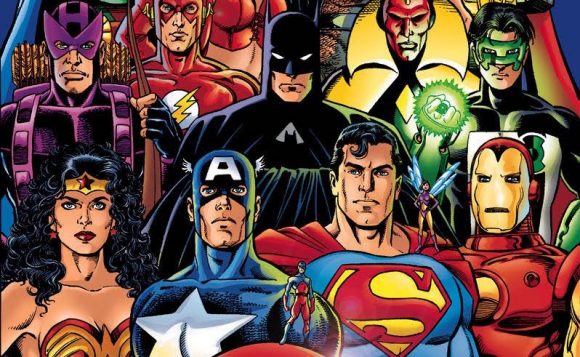
—
UPDATED 5/12/22: The great George Perez has died at the age of 67. This first ran in June 2019 as part of THE GEORGE PEREZ INTERVIEWS. We re-present it here. Click here for our complete index of Perez features. — Dan
—
Welcome to THE GEORGE PEREZ INTERVIEWS, a weekly series where the comics master discusses his greatest series.
Over 13 weeks, Perez, who’s retiring from the world of comics, gives you his take on each installment of our recent TOP 13 GEORGE PEREZ COUNTDOWN, which was written by 13th Dimension contributor Anthony Durso. (Click here for much more on that.) The segments are culled from a panel Perez and I did at East Coast Comicon.
Last time was #5 — The Who’s Who Covers. (Click here.)
This week, it’s The Avengers, which Perez first joined in 1975:
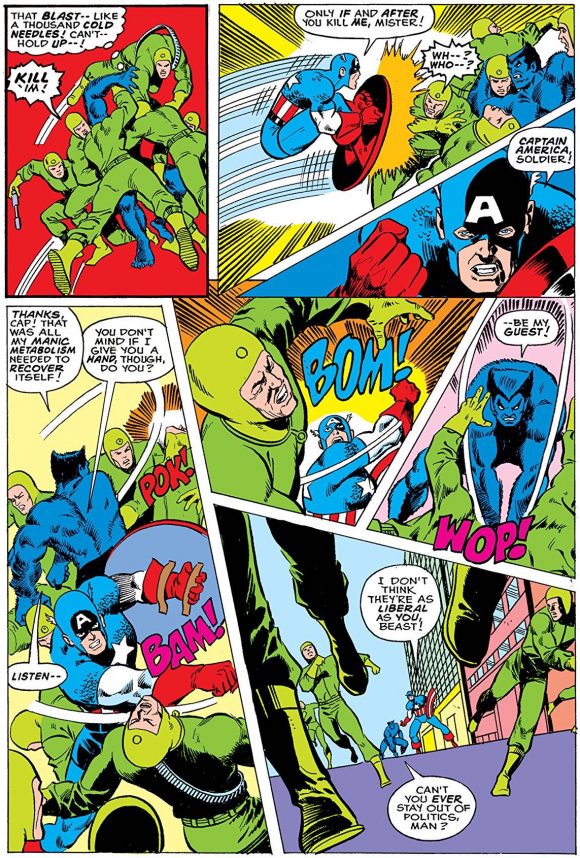
From Avengers #141, Perez’s first issue on the title. Inks by Vince Colletta.
Dan Greenfield: Alright, we’re down to the Final Four — or the Fantastic Four if you prefer. (Laughter.) Number 4 is The Avengers.
George Perez: Yep. For that book, again when I went to Marvel, that was the book I wanted to do but of course I was a young punk, they’re not gonna give me The Avengers right away.
I was very lucky. I was doing very minor-league (features) — Man-Wolf, Sons of the Tiger. And Bill Mantlo, who as you’ll recall as a writer did Rom and did lot of other great books, he worked on the Hulk — he was working as a production assistant to our production manager at the time named John Verpoorten. And George Tuska, the artist who was working on The Avengers, was going on vacation.
Bill knew, since he was the one writing Sons of the Tiger that I was drawing, how much I wanted to do The Avengers. He called me up and said “George, will you be willing to do one issue, a fill-in issue of The Avengers?” I said “Yeah!” without hesitation, even though I was already drawing one and a half books. (But at my prime I was doing three and a half books a month. I was young and stupid.)
But The Avengers I wasn’t going to turn down. I did it, and when George Tuska came back from vacation, he heard I had a great time and said “He wants to do it? Let him!”
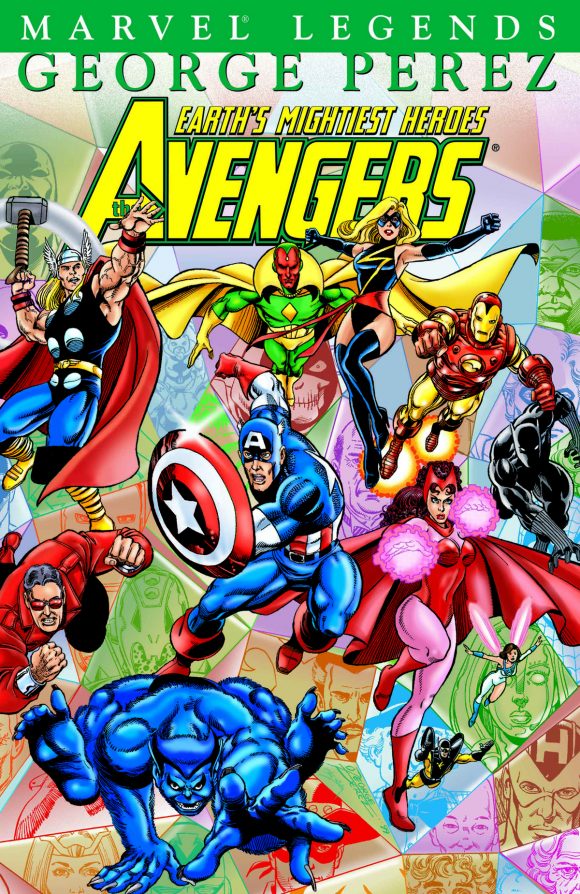
George, like a lot of artists, didn’t want to do team books. So, I got the book because George Tuska didn’t want to take it back. They liked what I did, Steve Englehart, the writer, liked what I did in my one issue. The fact that I was fearless. I wanted as many characters as you could throw in there. I wasn’t as good at drawing them at the time, but I was willing to learn.
Again, I was drawing a lot of books. It wasn’t until I slowed down and tried to do like one or two books at any given month that I started learning how to really draw. I was going too fast, so I was faking a lot and I had to really learn how to draw. But I was getting the best education — I was being trained on the job, and getting paid for it.
The second issue of The Avengers, I remember Steve Englehart threw a curveball at me. The fact that he had all the characters transplanted into the Old West so he could use the old Western characters that Marvel had, you know Two-Gun Kid, Rawhide Kid, Kid Colt. It’s like an actor, if he wants a film role and you offer a job in a Western and they ask “Do you ride a horse?” He’ll say yes — and then learn how to ride a horse in order to be able to get that job. You’re not gonna want to lose the job.
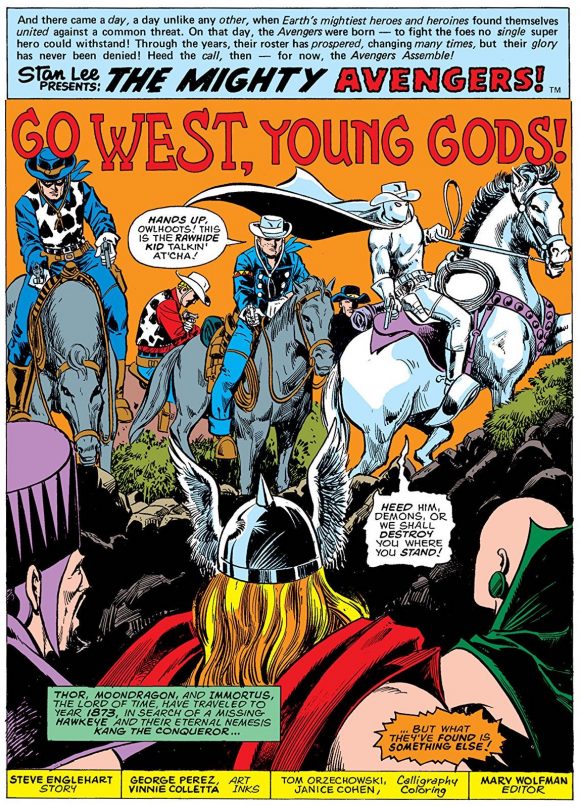
So, I’m not gonna say, “I can’t draw this. I’ve never drawn a horse. I’ve never drawn an old locomotive.” But I better learn. So, I got books. I got books by Frederic Remington and a few other Western artists and learned how to do Western characters and the Western scenario. Again, not the best in the world, but I was willing to learn.
Parallel to that, when I came back on The Avengers, in (the late ’90s) with Kurt Busiek, I was hoping I was a much better artist by that point and knew what I was doing. And the second issue, Kurt throws them all into Medieval times. (Laughter.) So now, not only do I have to draw all the Medieval costumes and the castles and the villages, but he threw an even bigger curveball — I had to draw Medieval versions of all of the Avengers! (More laughter.)
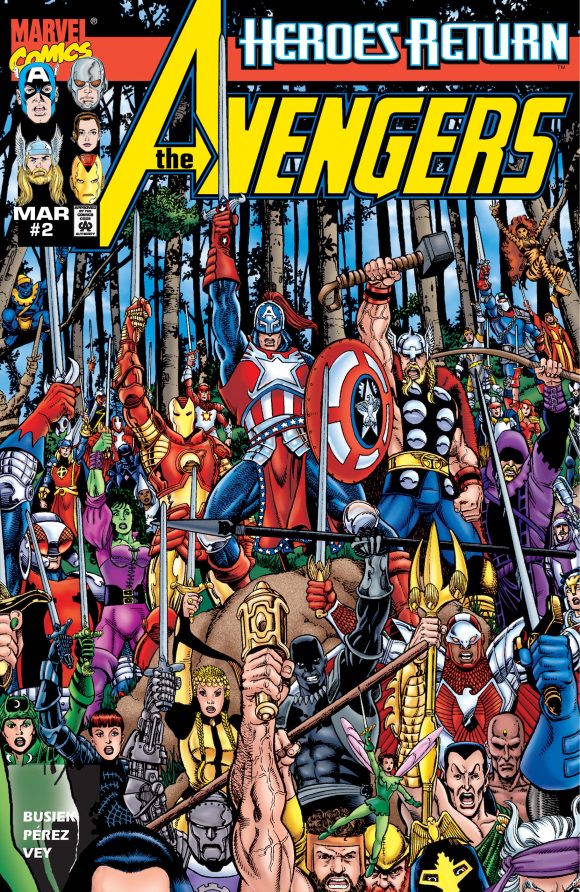
I always tell a writer, including me, if I curse your name when I’m looking at that script, I will be a better artist when I finish that script. I remember one artist who was a writer-artist, he told me one thing, I couldn’t wrap my mind around it but he says, “I as a writer will not write something that I as an artist cannot draw.”
And I thought, oh my God, that leads to stagnation! If I don’t challenge myself, if I don’t do something that’s gonna get me beyond what I’m doing now, what fun is that? How will I ever improve as an artist if I only play it safe? No, no, I want a writer throwing something at me that’s like, “Oh, my God, how can… ?”
It’s like the artist who was supposed to do Future Imperfect before me. (Writer) Peter David said they couldn’t get their mind around it — and yes, it was going to be difficult. That’s the challenge. If I can make that work, I’m a better artist at the end of it. If you can’t strive to be better — what’s the whole point of it?
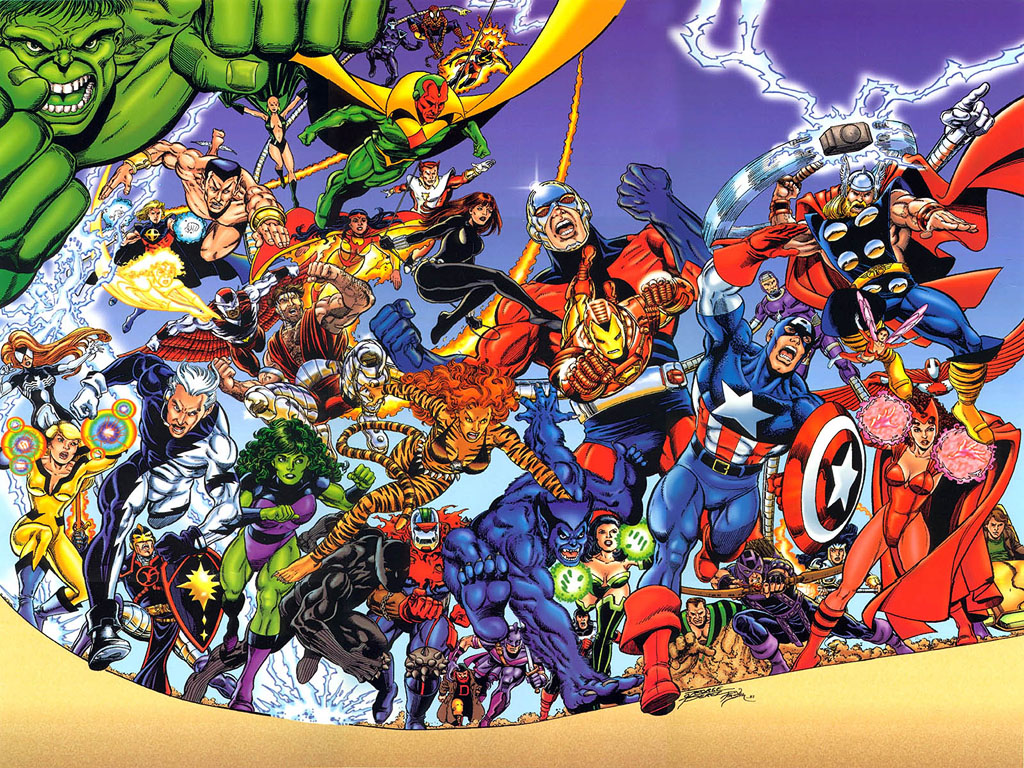
—
NEXT: THE NEW TEEN TITANS. Click here.
—
MORE
— The GEORGE PEREZ INTERVIEWS Index. Click here.
— GEORGE PEREZ’s TOP 13 Comics Series — RANKED. Click here.
—
NOTE: The text has been edited and condensed for clarity.

August 18, 2019
I enjoyed this interview.
August 18, 2019
I started reading The Avengers with #150. Had no idea that Perez was the penciller… Now… Uh-may-zing! His Avengers with Busiek! His JLA/Avengers!
May 13, 2022
His enthusiasm for art and comics shone through everything he said!